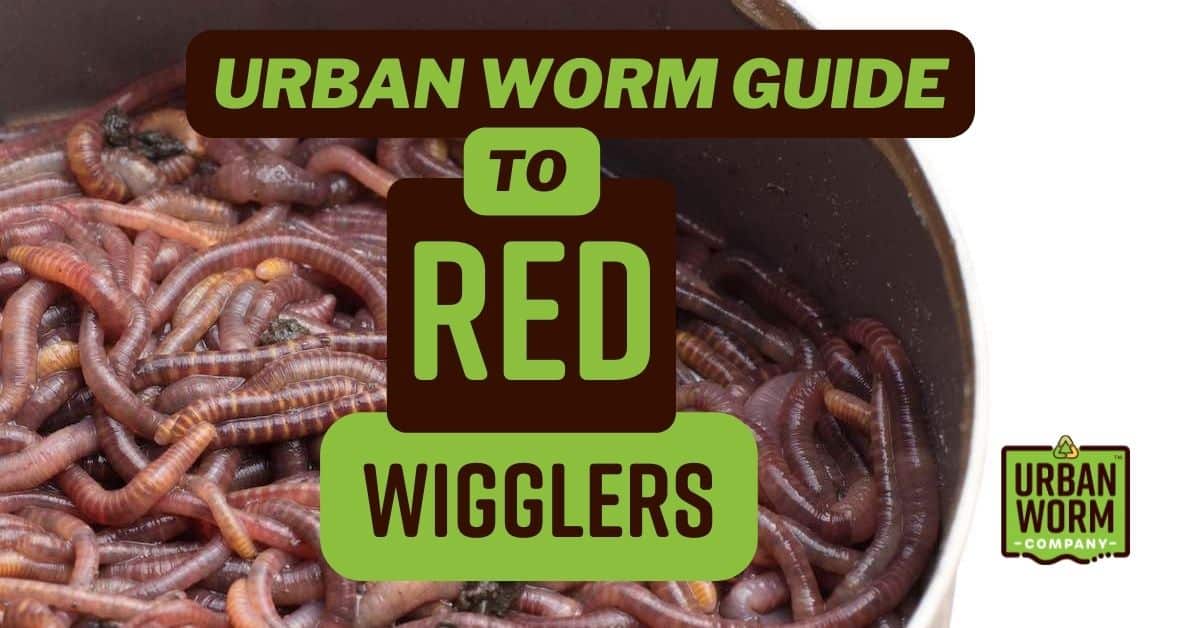How Red Wiggler Express can Save You Time, Stress, and Money.
Table of ContentsWhat Does Red Wiggler Express Do?Red Wiggler Express Things To Know Before You Get ThisExamine This Report about Red Wiggler ExpressSome Ideas on Red Wiggler Express You Need To KnowRed Wiggler Express Things To Know Before You Get This
Some worm farmers actually keep food and water to mimic dry spell conditions and bump up cocoon manufacturing. We don't suggest this for the home composter as it has the potential to exterminate too numerous of your finest worms. Currently that you understand everything about the red worm it's time to head out and discover a good vendor and obtain a pound or 2 and start your own worm ranch.We'll speak regarding just how to preserve red wigglers and why they should be the go-to worm for a lot of composters. Enjoyable truth: The "fetid" component of the binomial name refers to what some state is a smelly secretion the red wiggler uses to fend off killers. The anatomy of a red wiggler resembles that of various other typical earthworms; a long-segmented body starts at the pointed head and terminates at a slightly-flatted tail.
The Greatest Guide To Red Wiggler Express
The digestive system system is straightforward, starting at the mouth where the worm begins to eat its food before passing it on to the throat. The vocal cords is a muscle area which acts like a pump to pull food into the mouth prior to pumping it out into the esophagus. The esophagus is slim and thin-walled and functions as the "waiting space" for the gizzard.
Note: This demand for grinding is why grit is suggested in a worm bin. The worm features no indigenous grinding capability so the worm relies upon consumed grit to help grind its food in the gizzard. The belly is where the first chemical malfunction of food occurs with the help of a protein-busting enzyme.

Within 42 days, these baby worms will reach sexual maturity as evidenced by the emergence of the clitellum. A mature red wiggler can be expected to live in between one to 3 years. The mighty red wiggler might in some cases be utilized as a bait worm for smaller fish or as a healthy protein resource for poultries and reptiles.
The 3-Minute Rule for Red Wiggler Express
And as mentioned over, they are the most usual composting worm in the globe. However why? Well there's probably not simply one factor. Instead, a combination of price, hardiness, and comfort in a vast variety of temperatures makes it one of the most ideal composting worm for the majority of new vermicomposters. Red wigglers and their cocoons can endure in a large range of conditions.
This is a typical practice amongst worm shippers that don't want to risk having the worms rest in a hot or chilly storage facility over the weekend break. Worm growers are not keeping worms in a situation where they prepare to ship. The worms must be collected from their habitat initially, so cultivators will certainly commonly set a Friday or Saturday target date in order to harvest in time for a Monday delivery.
To reduce shipping price, you may desire to see if there are any neighboring "Mama and Pop" stores with a Google search. If you don't locate what you're looking for, then I welcome you to take a look at worms with the Urban Worm Firm! The quantity of red wigglers you purchase must be only reliant upon the area you have available for vermicomposting.
I call these the "Large 3" elements of worm bin maintenance. If you maintain all 3 within suitable varieties, after that there's not * that * a lot that can go incorrect with your container. As mentioned earlier, red wigglers have a broad temperature level resistance. For ideal outcomes, maintain a temperature of 55F-90F. Short departures out of that temperature array are great.
The 10-Minute Rule for Red Wiggler Express

For finest outcomes, you desire to shoot for regarding 60-70% wetness degree. At the excellent moisture levels which is just under 70% that handful ought to barely produce one decline of fluid.


The European Nightcrawler, the larger relative of the red wiggler, is equally as starved and likewise produces an excellent bait worm. It likes a bit of a cooler atmosphere than the red wiggler. The African Nightcrawler is a really huge composting worm and makes a lovely, granular actors.
The Indian Blue is ravenous, however also prefers a warmer climate and it likewise shows a propensity to leave the container. The red wiggler is a sturdy worm and isn't as fussy regarding its environment. I such as to call it the Ford Taurus of vermicomposting worms; you won't brag to your hardcore composting buddies that you own them, but they will offer you well.
The Buzz on Red Wiggler Express
Surefire to life 1/2 lb of hand arranged Red Wigglers/Compost with worms (+500 worms) in different stages of life from cocoons to develop worms in their all-natural environment/bedding. Hand arranged worms minimized the disturbance of the worms therefore guaranteeing real-time distribution. Red wiggler worms do not such as vibrations or light.